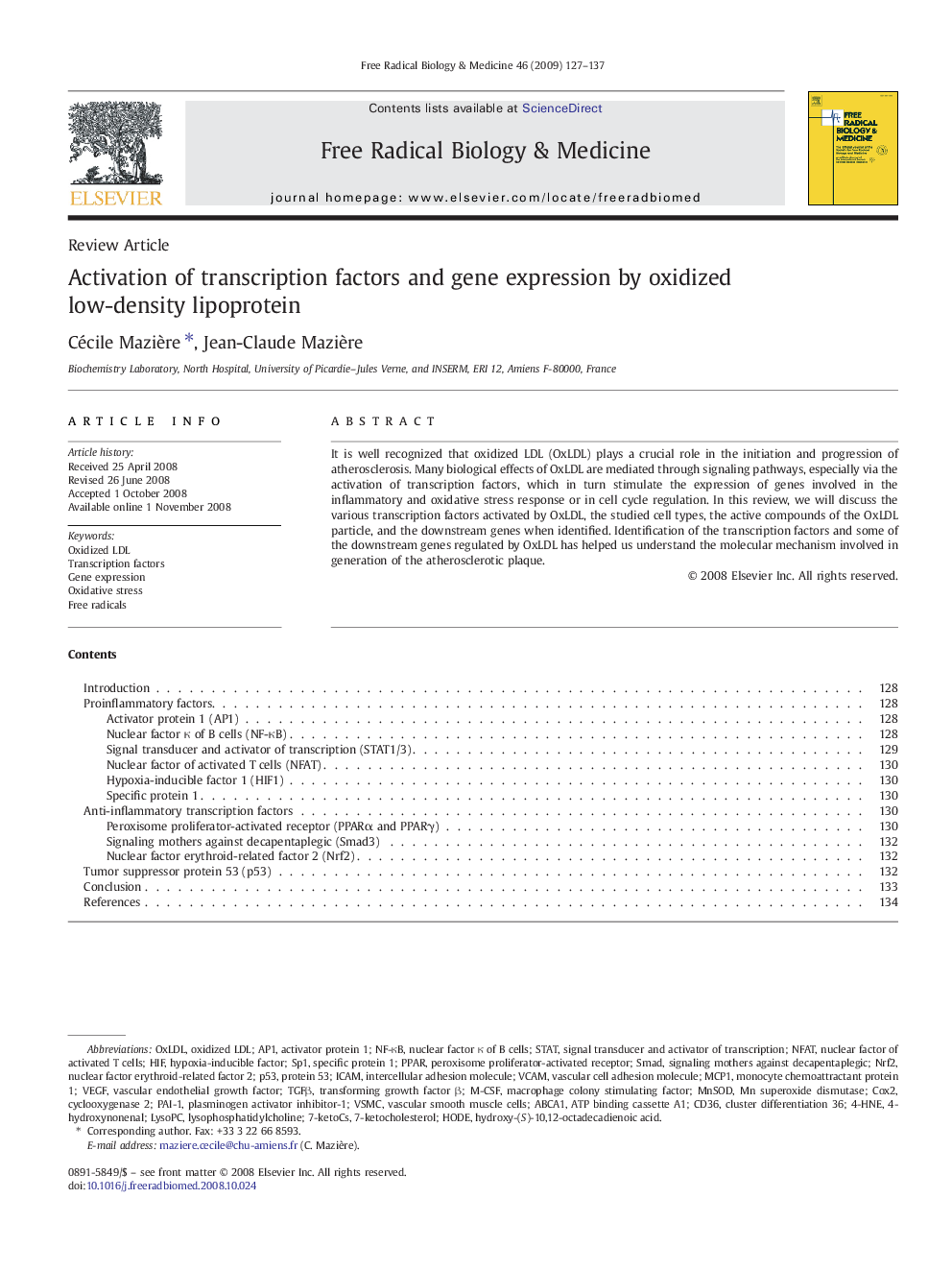| Article ID | Journal | Published Year | Pages | File Type |
|---|---|---|---|---|
| 1910456 | Free Radical Biology and Medicine | 2009 | 11 Pages |
Abstract
It is well recognized that oxidized LDL (OxLDL) plays a crucial role in the initiation and progression of atherosclerosis. Many biological effects of OxLDL are mediated through signaling pathways, especially via the activation of transcription factors, which in turn stimulate the expression of genes involved in the inflammatory and oxidative stress response or in cell cycle regulation. In this review, we will discuss the various transcription factors activated by OxLDL, the studied cell types, the active compounds of the OxLDL particle, and the downstream genes when identified. Identification of the transcription factors and some of the downstream genes regulated by OxLDL has helped us understand the molecular mechanism involved in generation of the atherosclerotic plaque.
Keywords
PAI-1PPARcox2CD36LysoPCMnSODMCP1HIFVSMCNF-κBICAMVCAMM-CSFAP1SMADoxLDLnuclear factor erythroid-related factor 2ABCA1p534-HNE4-hydroxynonenalNFATNrf2TGFβ7-KetocholesterolHODEOxidized LDLSp1STATGene expressionTransforming growth factor βOxidative stressFree radicalsVascular smooth muscle cellsMn superoxide dismutasecyclooxygenase 2Nuclear Factor of Activated T CellsTranscription factorsHypoxia-inducible factormacrophage colony stimulating factorVascular endothelial growth factorVascular Endothelial Growth Factor (VEGF)LysophosphatidylcholineSignal transducer and activator of transcriptionPlasminogen activator inhibitor-1intercellular adhesion moleculevascular cell adhesion moleculeprotein 53monocyte chemoattractant protein 1Specific protein 1activator protein 1peroxisome proliferator-activated receptor
Related Topics
Life Sciences
Biochemistry, Genetics and Molecular Biology
Ageing
Authors
Cécile Mazière, Jean-Claude Mazière,
